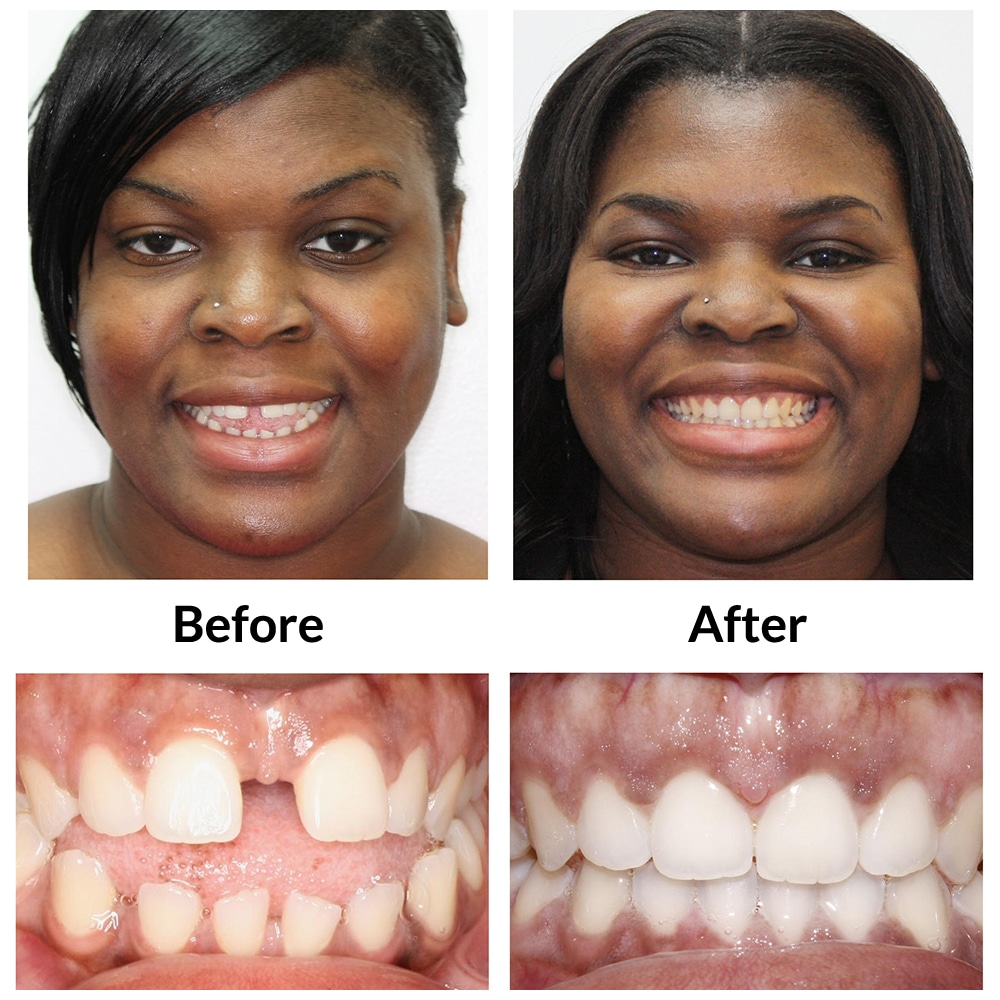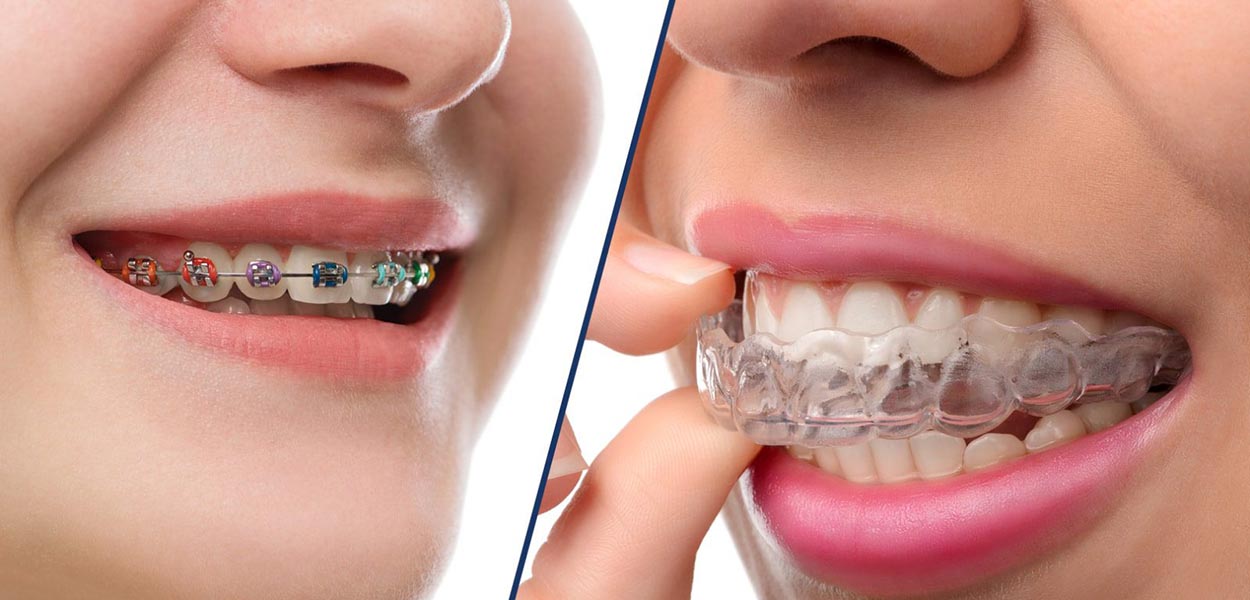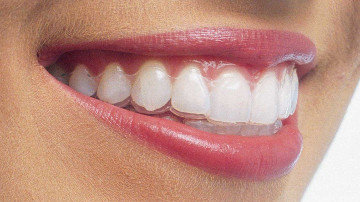Success Stories: How Invisalign Changed Lives and Improved Confidence
Success Stories: How Invisalign Changed Lives and Improved Confidence
Blog Article
Invisalign vs. Traditional Braces: Which Choice Is Right for You?
When taking into consideration orthodontic treatment, the choice between Invisalign and typical braces provides a number of important elements that merit mindful assessment. Invisalign supplies a discreet choice with removable aligners, while traditional dental braces offer an extra visible yet efficient remedy for severe imbalance. Each choice incorporates distinctive advantages and downsides connected to aesthetics, comfort, treatment period, and price. Recognizing these subtleties is crucial for making an informed decision that aligns with your individual choices and way of living. The inquiry continues to be: which option will ideal fulfill your orthodontic demands and assumptions?
Overview of Treatment Options

In comparison, traditional braces are composed of steel brackets and wires that are adhered to the teeth. This method uses continual stress with time to accomplish alignment. While efficient for complicated orthodontic concerns, conventional dental braces call for regular brows through for adjustments and can position obstacles in keeping oral hygiene because of the problem of cleansing around cables and braces.
Both options have their advantages, and the selection frequently depends upon details dental conditions, way of life choices, and patient compliance. Inevitably, seeking advice from an orthodontic professional is vital for identifying one of the most ideal treatment strategy tailored to individual requirements. Understanding the subtleties of each alternative can considerably affect the total success of orthodontic treatment.
Aesthetic Considerations
A substantial aspect affecting the selection in between Invisalign and typical dental braces is the aesthetic appeal each treatment provides. Invisalign aligners are crafted from clear plastic, making them virtually invisible when put on.
In contrast, conventional braces contain metal braces and wires, which can be more visible. While innovations in orthodontic technology have resulted in the development of smaller brackets and tinted elastics, standard dental braces still preserve an even more conspicuous account. For some individuals, the exposure of dental braces may deter them from seeking necessary therapy.
Ultimately, the option between Invisalign and standard braces might rest on individual preferences regarding appearances. People that prioritize discretion typically favor Invisalign, while those that are much less concerned concerning exposure might choose typical dental braces. Recognizing the aesthetic implications of each option is important for making a notified choice that straightens with one's way of living and preferences.
Comfort and Convenience

In terms of benefit, Invisalign aligners are removable, allowing individuals to appreciate their preferred foods without limitation and preserve ideal oral hygiene. Brushing and flossing are simplified, as the aligners can be taken out throughout these regimens, whereas conventional dental braces call for careful steering around brackets and cables.
In comparison, conventional braces require regular changes, making them less hassle-free for those with active routines. In general, the convenience and ease of Invisalign make it an enticing option for many individuals looking for orthodontic treatment.
Treatment Duration and Effectiveness
While both Invisalign and typical braces work in fixing oral misalignments, the period of treatment can vary significantly between the 2 options. Generally, check that Invisalign therapy can take anywhere from 12 to 18 months, depending upon the intricacy of the instance. The clear aligners work by slowly changing teeth right into their desired settings, and routine follow-ups with an orthodontist aid ensure development continues to be on the right track.
On the other hand, traditional braces frequently require a longer commitment, typically ranging from 18 months to three years. This is because of their set nature and making use of wires and brackets, which can be much more efficient for extreme imbalances and intricate instances (Invisalign). The therapy effectiveness of conventional braces is well-documented, as they enable for exact changes and greater control over tooth motion
Ultimately, the option in between Invisalign and traditional dental braces may pivot on both the expected treatment duration and the particular oral problems at hand. Consulting with an orthodontist is critical, as they can supply customized recommendations based on individual needs, making sure the chosen method aligns with wanted end results and durations.
Price Contrast and Insurance Alternatives
Expense plays a considerable role in the decision-making process for people taking into consideration orthodontic therapy, whether choosing for Invisalign or traditional dental braces. On standard, the price of Invisalign ranges from $3,000 to $8,000, while typical look at this now dental braces typically cost between $2,000 and $6,000. Variables influencing these prices consist of the intricacy of the instance, the period of therapy, and geographical area.
Numerous dental insurance strategies offer partial insurance coverage for orthodontic therapies, but the specifics can vary extensively. Normally, traditional dental braces may be a lot more frequently covered by insurance coverage plans contrasted to Invisalign, which some insurers categorize as an aesthetic procedure.
Additionally, a number of orthodontic methods supply adaptable check it out payment plans, making both treatment choices extra accessible. Clients must make inquiries concerning potential financing options and discounts for in advance repayments. Evaluating the overall price, including insurance coverage benefits and layaway plan, is essential for making a notified decision that straightens with both visual preferences and budget plan factors to consider.

Final Thought
In recap, the choice between Invisalign and standard dental braces rests on several factors, including aesthetic preferences, comfort, treatment duration, and expense. Invisalign uses a discreet, removable choice that promotes oral health and dietary adaptability, while conventional braces may be better for intricate dental issues and usually come with a reduced cost point. Inevitably, consultation with an orthodontist is necessary to analyze private situations and determine one of the most proper treatment option for accomplishing ideal dental placement.
When thinking about orthodontic treatment, the selection between Invisalign and traditional dental braces presents numerous crucial elements that warrant cautious evaluation.Contrasting Invisalign and standard braces discloses unique treatment choices for orthodontic adjustment.While both Invisalign and traditional dental braces are effective in dealing with oral misalignments, the period of therapy can vary considerably between the 2 choices.Expense plays a significant duty in the decision-making procedure for people thinking about orthodontic therapy, whether choosing for Invisalign or conventional dental braces.In recap, the option in between Invisalign and traditional braces pivots on multiple elements, consisting of aesthetic preferences, convenience, therapy duration, and expense.
Report this page